
Date: July 13, 2021
Location: Lat: 35.265366°, Lon: -48.002336°
Dive depth range: 1,697 - 1,983 meters (5,568 - 6,506 feet)
Access Dive Summary and ROV Data
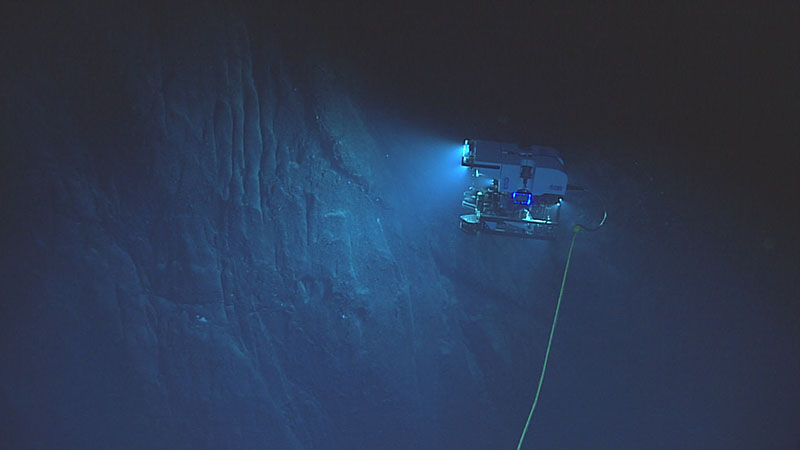
Remotely operated vehicle Deep Discoverer images the impressive wall feature explored during Dive 10 of the 2021 North Atlantic Stepping Stones expedition. Along the wall, scar marks were visible that geologists think may have been caused by a mix of water and sediment cascading downslope, creating abraded channels. Image courtesy of NOAA Ocean Exploration, 2021 North Atlantic Stepping Stones: New England and Corner Rise Seamounts. Download largest version (jpg, 508 KB).
Dive 10 was the second 2021 North Atlantic Stepping Stones expedition dive on Yakutat Seamount, part of the Corner Rise Seamount Chain. This dive was deeper than yesterday's dive on Yakutat, taking us to a starting depth of approximately 1,980 meters (6,496 feet) as we explored a saddle feature between two bathymetric highs located on the central ridge of the seamount.
We started the dive on a smooth pavement of rock that appeared to be igneous sheet flows with patches of coarse sediments of biological origin and loose ancient coral rubble. Large corals and sponges were notably absent here, possibly due to the loose rubble not being conducive to larval settling. As the dive progressed, large igneous outcrops were observed, including large collapsed pillows of basalt that provided habitat for numerous organisms, including corals and sponges. A steeper wall feature was then traversed that appeared to be a large block of carbonate rock that was weathered and eroded in places and supported a low diversity of life, with sparse sponge colonies and virtually no corals. At the top of the ridge, we observed more smooth pavement surfaces, but a considerably different landscape in terms of marine life, with several large sponge colonies, healthy corals, and more abundant anemones, sea stars, and brittle stars.
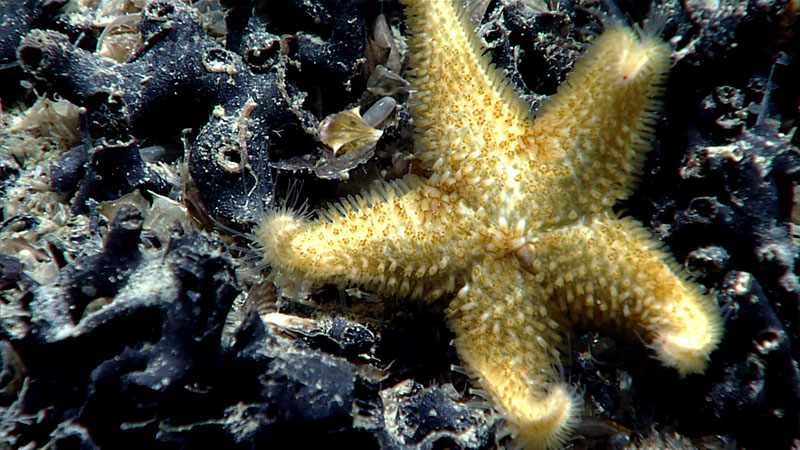
During Dive 10 of the 2021 North Atlantic Stepping Stones expedition, we collected this potentially new species of sea star within the genus Lophaster. We saw another similar sea star later in the dive. These sea stars are known to feed on crinoids and given that we saw several crinoids scattered across the seafloor during the dive, this sea star was likely well fed. Image courtesy of NOAA Ocean Exploration, 2021 North Atlantic Stepping Stones: New England and Corner Rise Seamounts. Download largest version (jpg, 1.3 MB).
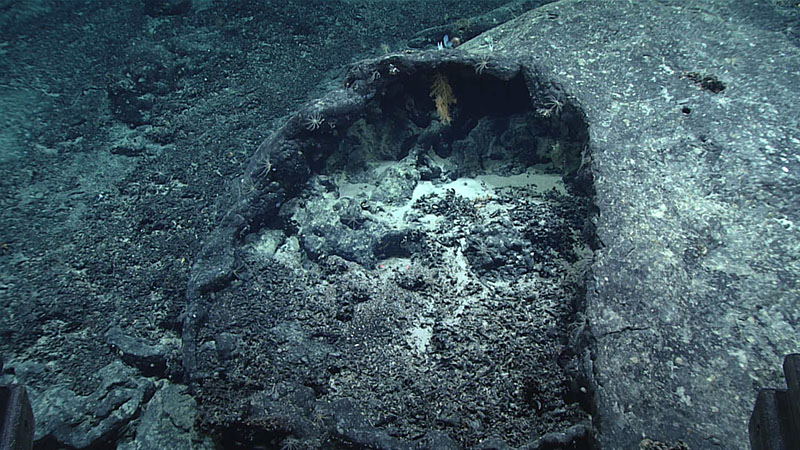
A small black coral can be seen making a home on the underside of this very large, collapsed pillow lava structure, observed near the beginning of the tenth dive of the 2021 North Atlantic Stepping Stones expedition. Image courtesy of NOAA Ocean Exploration, 2021 North Atlantic Stepping Stones: New England and Corner Rise Seamounts. Download largest version (jpg, 1.6 MB).
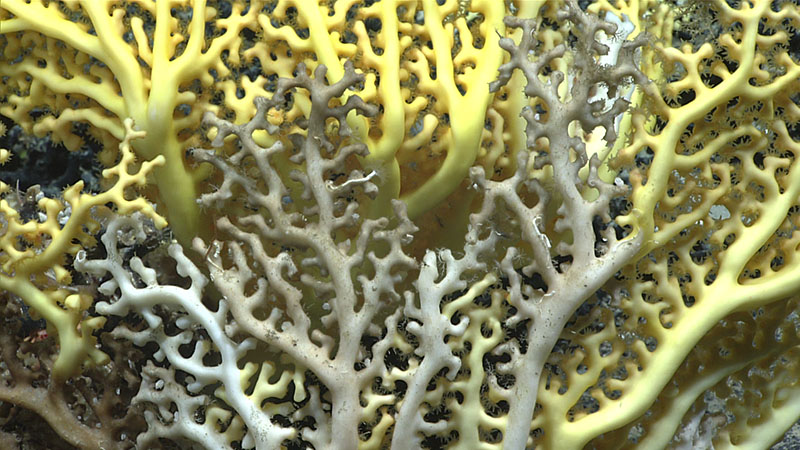
A close look at the backside structure of a coral in the genus Enallopsammia. A feature of these kinds of corals is that all of the individual coral polyps face in one direction, likely into the current to catch food floating by. At the base of the wall explored during Dive 10 of the 2021 North Atlantic Stepping Stones expedition, we also saw black corals in the genera Bathypathes and Stauropathes, Acanella bamboo corals, and Chrysogorgia and Anthomastus soft corals. Image courtesy of NOAA Ocean Exploration, 2021 North Atlantic Stepping Stones: New England and Corner Rise Seamounts. Download largest version (jpg, 1.1 MB).
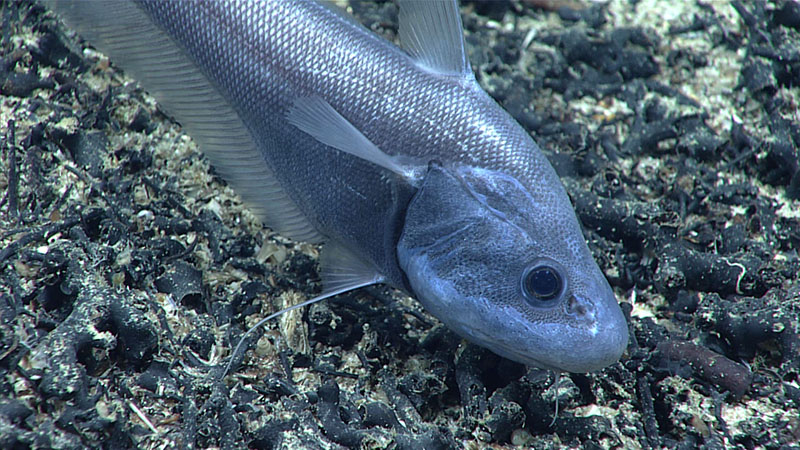
This rattail (Coryphaenoides carapinus) was observed at a depth of 1,915 meters (6,283 feet) during exploration of Yakatut Seamount on Dive 10 of the 2021 North Atlantic Stepping Stones expedition. These fish are known to eat brittle stars, of which we saw quite a few dotting the coral rubble on the seafloor. Image courtesy of NOAA Ocean Exploration, 2021 North Atlantic Stepping Stones: New England and Corner Rise Seamounts. Download largest version (jpg, 1.5 MB).
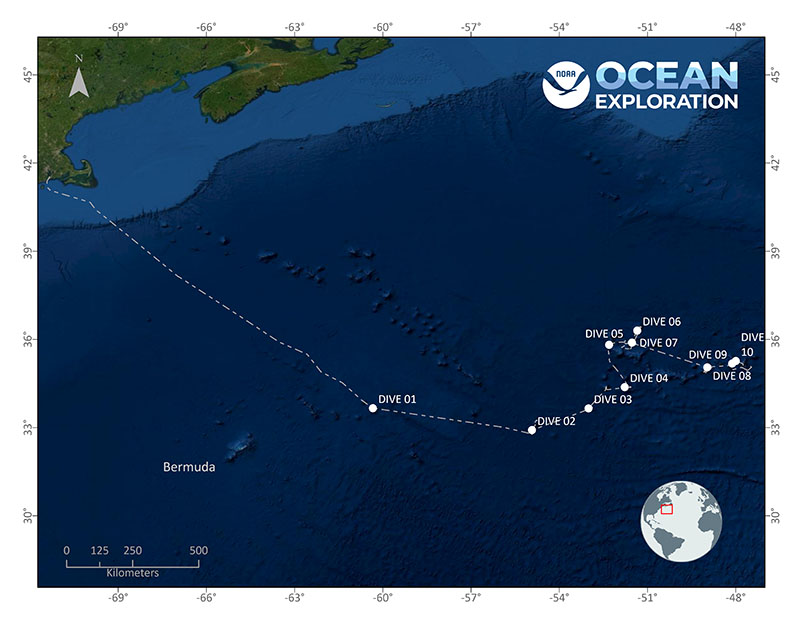
Location of Dive 10 of the 2021 North Atlantic Stepping Stones expedition on July 13, 2021. Map courtesy of NOAA Ocean Exploration, 2021 North Atlantic Stepping Stones: New England and Corner Rise Seamounts. Download largest version (jpg, 3 MB).
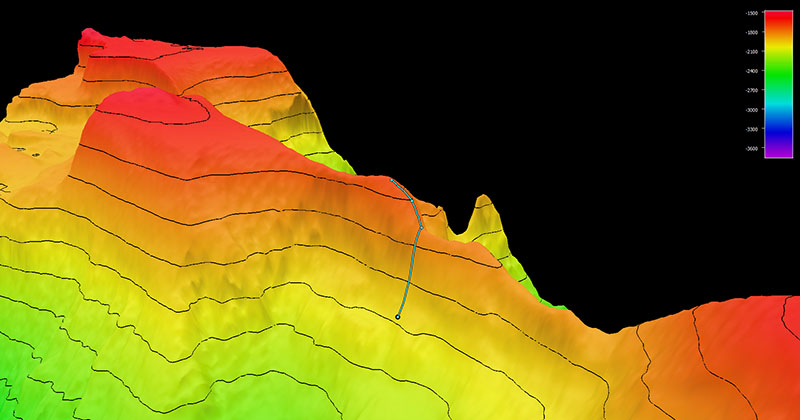
Image showing the dive track of Dive 10 of the 2021 North Atlantic Stepping Stones expedition. Scale is water depth in meters. Image courtesy of NOAA Ocean Exploration, 2021 North Atlantic Stepping Stones: New England and Corner Rise Seamounts. Download largest version (jpg, 609 KB).